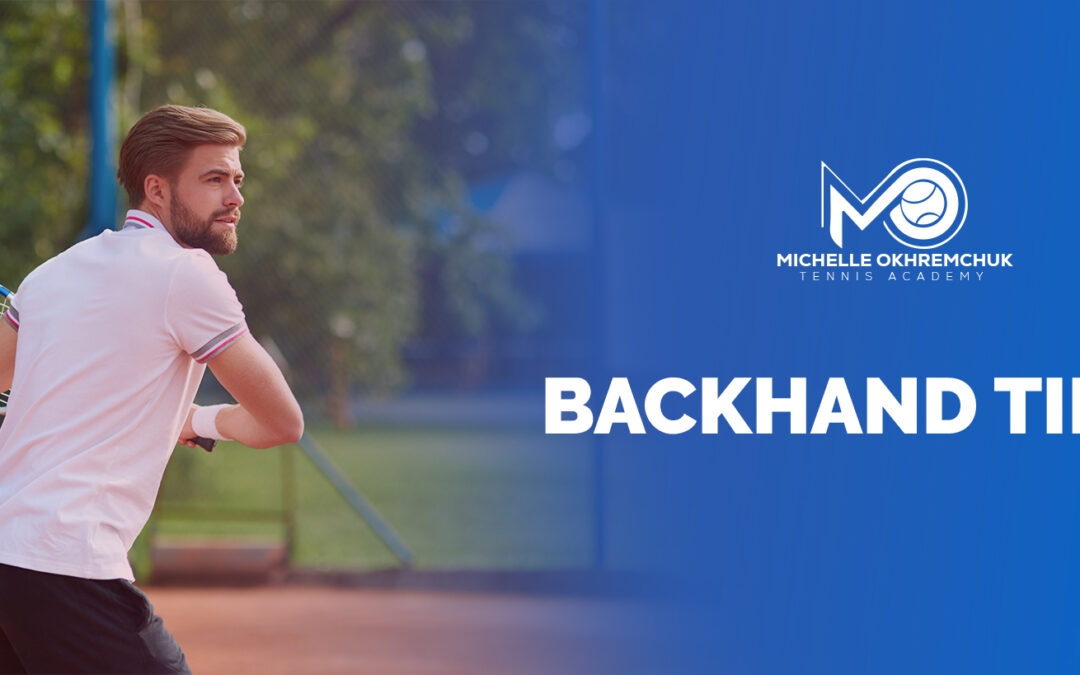As young tennis players getting started in the world of tennis. There is an array of shots that you will find extremely useful along your journey.
The backhand being one of them stands out as a fundamental skill that can shape your gameplay.
I’ll unveil a treasure trove of effective tennis backhand tips that can help you master the sport and improve your game quickly.
The backhand stroke, often considered the unsung hero of the tennis repertoire, is a skill that holds immense significance in your overall performance. It’s a shot that demands dedication, practice, and a keen understanding of its nuances.
These invaluable insights will not only enhance your backhand technique but also infuse your game with power, control, and a dash of style.
Let’s get started.
Correct Positioning
The backhand stroke requires not only physical finesse but also a deep understanding of positioning and timing.
One of the most critical steps towards mastering the backhand shot is finding the sweet spot – that ideal distance from the ball.
A common mistake is positioning yourself too close to the ball. When you stand too close, you limit the range of your motion and the racket’s ability to generate the desired force. This positional mistake weakens your shot power and reduces your ability to dictate the ball’s trajectory.
You want to maintain a comfortable distance and allow your body to move freely so your racket connects with the ball at its peak.
This simple adjustment will help you to unleash your backhand with finesse and precision.
Shoulder Turn
Use the shoulder turn technique to supercharge your backhand. As you prepare for your shot, rotate your shoulder to align with the ball’s trajectory.
The concept is a simple alignment of your shoulder with the ball’s trajectory. This adjustment harnesses the force of physics to infuse your shot with enough power. This motion stores energy and easily transforms your backhand into a forceful shot.
The moment you unload your backhand, the energy you’ve accumulated is unleashed and propels the ball with heightened force and precision.
Lead with Your Left Arm
Your left arm is a key step to actualising your backhand mastery. Your left arm acts as a counterbalance to your racket during the backhand swing. When you lead with your left arm, it helps maintain stability and balance throughout the shot.
This counterbalance prevents over-rotation or uncontrolled movements that can compromise the accuracy and control of your shot.
The integration of your left arm introduces a subtle shift in the mechanics of your backhand. As your racket connects with the ball, your left arm plays the role of a guide, directing the path of the shot.
Consistency is crucial in tennis, as it allows you to develop muscle memory and repeat successful shots under different circumstances. A consistent swing path contributes to accuracy and helps you execute your backhand reliably, even in high-pressure situations.
Maintain a Longer Ball-Racket Connection
Maintaining a longer ball-racket connection during your backhand shot is a critical aspect of optimizing your performance and control on the tennis court. This principle has a profound impact on the quality of your shots and can significantly influence the outcome of your matches.
The secret lies in keeping the ball on your racket for just a fraction longer.
When your racket remains in contact with the ball for an extended period, you can influence its spin rate and direction, ensuring that your shots land precisely where you intend them to.
This control is particularly valuable when executing cross-court shots, drop shots, or shots along the sideline. By keeping the ball on your racket for longer, you can finesse your backhand to land in areas that are challenging for your opponent to reach.
It alos allows you to adjust the amount of spin you apply to the ball. When you alter the angle of your racket during the extended connection, you can generate either topspin, backspin, or sidespin, depending on the shot you wish to execute.
This manipulation of spin adds complexity to your shots and can catch your opponent off guard.
Guide the Ball with Your Hip Movement
Guiding the ball with your hip movement plays a crucial role in optimizing your shot’s power, placement, and control.
This technique taps into the natural mechanics of your body and enhances the effectiveness of your backhand strokes.
Your hip movement is crucial when it comes to generating power in your backhand. As you initiate your swing, the rotation of your hips transfers kinetic energy through your core and into your arms and racket.
This energy amplification results in a more forceful and impactful shot and allows you to hit the ball with greater power.
The movement of your hips influences the direction in which your shot travels. By aligning your hips with the intended target, you establish a clear line of trajectory for the ball.
This alignment enhances your accuracy and enables you to consistently place the ball in specific areas of the court.
Executing proper hip rotation in your backhand shot contributes to a well-coordinated motion that prevents over-rotation or imbalance. This stability ensures that your shot remains controlled and accurate even in fast-paced and dynamic rallies.
Conclusion
In the world of tennis, the backhand is your statement on the court. Armed with these effective tennis backhand tips, you’re equipped to take your game to soaring heights.
As young champions, your journey is not just about learning a skill; it’s about embracing the artistry of the game. So step onto the court with confidence, practice these tips, and let your backhand improve with power and precision.

